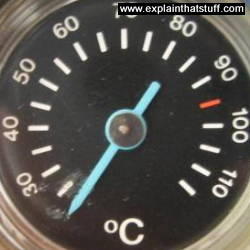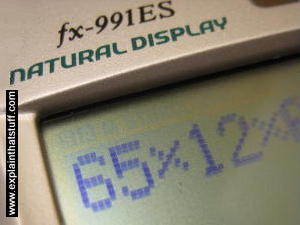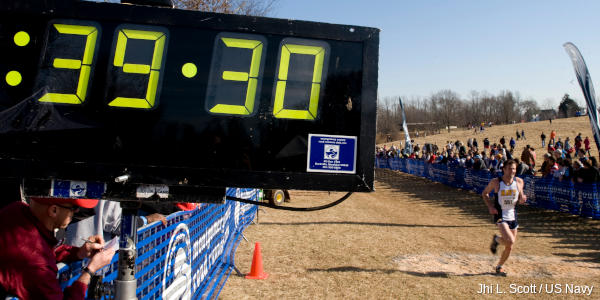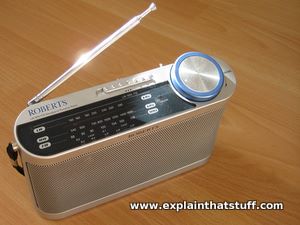
Analog and digital
by Chris Woodford. Last updated: January 10, 2024.
Back in the late 1970s, one of the most exciting things you could own was a digital watch. Instead of trying to figure out the time from slowly rotating hands, as you had to do with an old-style analog watch, you simply read the numbers off a digital display. Since then, we've got more used to the idea of digital technology. Now pretty much everything seems to be digital, from television and radio to music players, cameras, cellphones, and even books. What's the difference between analog and digital technology? Which is best? Let's take a closer look!
Photo: Analog or digital? This elegant Swiss watch shows the time with hands moving round a dial, so it's an example of what we call analog technology. The microwave display behind it shows my cooking time (13 minutes 10 seconds) in digital (numeric) format.
Sponsored links
Contents
What is analog technology?
People accept digital things easily enough, often by thinking of them as electronic, computerized, and perhaps not even worth trying to understand. But the concept of analog technology often seems more baffling—especially when people try to explain it in pages like this. So what's it all about?
What does analog actually mean?
If you have an analog watch, it tells the time with hands that sweep around a dial: the position of the hands is a measurement of the time. How much the hands move is directly related to what time it is. So if the hour hand sweeps across two segments of the dial, it's showing that twice as much time has elapsed compared to if it had moved only one segment. That sounds incredibly obvious, but it's much more subtle than it first seems. The point is that the hand's movements over the dial are a way of representing passing time. It's not the same thing as time itself: it's a representation or an analogy of time. The same is true when you measure something with a ruler. If you measure the length of your finger and mark it on the surface of a wooden ruler, that little strip of wood or plastic you're looking at (a small segment of the ruler) is the same length as your finger. It isn't your finger, of course—it's a representation of your finger: another analogy. That's really what the term analog means.

Photo: This dial thermometer shows temperature with a pointer and dial. If you prefer a more subtle definition, it uses its pointer to show a representation (or analogy) of the temperature on the dial.
Analog measurements
Until computers started to dominate science and technology in the early decades of the 20th century, virtually every measuring instrument was analog. If you wanted to measure an electric current, you did it with a moving-coil meter that had a little pointer moving over a dial. The more the pointer moved up the dial, the higher the current in your circuit. The pointer was an analogy of the current. All kinds of other measuring devices worked in a similar way, from weighing machines and speedometers to sound-level meters and seismographs (earthquake-plotting machines).
Analog information
However, analog technology isn't just about measuring things or using dials and pointers. When we say something is analog, we often simply mean that it's not digital: the job it does, or the information it handles, doesn't involve processing numbers electronically. An old-style film camera is sometimes referred to as example of analog technology. You capture an image on a piece of transparent plastic "film" coated with silver-based chemicals, which react to light. When the film is developed (chemically processed in a lab), it's used to print a representation of the scene you photographed. In other words, the picture you get is an analogy of the scene you wanted to record. The same is true of recording sounds with an old-fashioned cassette recorder. The recording you make is a collection of magnetized areas on a long reel of plastic tape. Together, they represent an analogy of the sounds you originally heard.

Photo: Photographic film is generally described as analog technology. Confusingly, however, some people argue that it's digital because of the way the silver crystals form the image—but that's quite a picky, subtle argument and not one I'd really go along with.
What is digital technology?
Digital is entirely different. Instead of storing words, pictures, and sounds as representations on things like plastic film or magnetic tape, we first convert the information into numbers (digits) and display or store the numbers instead.
Digital measurements

Photo: A small LCD display on a pocket calculator. Most digital devices now use LCD displays like this, which are cheap to manufacture and easy to read.
Many scientific instruments now measure things digitally (automatically showing readings on LCD displays) instead of using analog pointers and dials. Thermometers, blood-pressure meters, multimeters (for measuring electric current and voltage), and bathroom scales are just a few of the common measuring devices that are now likely to give you an instant digital reading. Digital displays are generally quicker and easier to read than analog ones; whether they're more accurate depends on how the measurement is actually made and displayed.
Digital information

Photo: Ebooks owe their advantages to digital technology: they can store the equivalent of thousands of paper books in a thin electronic device that fits in your book. Not only that, they can download digital books from the Internet, which saves an analog trek to your local bookstore or library!
All kinds of everyday technology also works using digital rather than analog technology. Cellphones, for example, transmit and receive calls by converting the sounds of a person's voice into numbers and then sending the numbers from one place to another in the form of radio waves. Used this way, digital technology has many advantages. It's easier to store information in digital form and it generally takes up less room. You'll need several shelves to store 400 vinyl, analog LP records, but with an MP3 player you can put the same amount of music in your pocket! Electronic book (ebook) readers are similar: typically, they can store a couple of thousand books—around 50 shelves worth—in a space smaller than a single paperback! Digital information is generally more secure: cellphone conversations are encrypted before transmission—something easy to do when information is in numeric form to begin with. You can also edit and play about with digital information very easily. Few of us are talented enough to redraw a picture by Rembrandt or Leonardo in a slightly different style. But anyone can edit a photo (in digital form) in a computer graphics program, which works by manipulating the numbers that represent the image rather than the image itself.

Photo: Large digital clocks are quick and easy for runners to read. Photo by Jhi L. Scott courtesy of US Navy and Wikimedia Commons.
Which is better, analog or digital?
Just because digital technology has advantages, that doesn't mean it's always better than analog. An analog watch might be far more accurate than a digital one if it uses a high-precision movement (gears and springs) to measure time passing, and if it has a sweeping second hand it will represent the time more precisely than a digital watch whose display shows only hours and minutes. Surprisingly, analog watches can also keep time better than quartz ones: the day-to-day variations in a mechanical, analog watch tend to cancel one another out, while those in an electronic quartz watch tend to compound one another (here's why). Generally, the most expensive watches in the world are analog ones (of course, that's partly because people prefer the way they look), though the world's most accurate atomic clocks show time with digital displays.

Photo: An early analog computer from 1949: machines like this represented numbers with analog dials, levers, belts, and gears rather than (digital) numbers stored in electronic memories. Picture courtesy of NASA on the Commons.
One interesting question is whether information stored in digital form will last as long as analog information. Museums still have paper documents (and ones written on clay or stone) that are thousands of years old, but no-one has the first email or cellphone conversation. Open any book on the history of photography and you'll see reproductions of early photos taken by Niepce, Daguerre, and Fox-Talbot. But you won't see any pictures of the first digital photo: even though it was much more recent, probably no-one knows what it was or who took it! Lots of people own and cherish plastic LP records that are decades old, but no-one attaches the same importance to disposable MP3 music files. A lot of information recorded on early computer memory devices is completely impossible to read with newer computers; even floppy disks, commonplace as recently as the mid-1990s, are impossible to read on modern computers that no longer have built-in floppy drives.
That's why, though the future may be digital, analog technology will always have its place!




